 W
WNorth Borneo was a British protectorate located in the northern part of the island of Borneo. The territory of North Borneo was originally established by concessions of the Sultanates of Brunei and Sulu in 1877 and 1878 to a German-born representative of Austria-Hungary, a businessman and diplomat, von Overbeck.
 W
WNorth Borneo was a British protectorate located in the northern part of the island of Borneo. The territory of North Borneo was originally established by concessions of the Sultanates of Brunei and Sulu in 1877 and 1878 to a German-born representative of Austria-Hungary, a businessman and diplomat, von Overbeck.
 W
WAntanum or Antanom (1885-1915) was a famous and influential Murut warrior from North Borneo, Malaysia who according to local oral history claimed to have supernatural powers. Because of this he was able to receive support from the chiefs and villagers from around the villages of Keningau, Tenom, Pensiangan and Rundum and led the Rundum uprising against the British North Borneo Company but was killed during fighting with the company army in Sungai Selangit near Pensiangan.
 W
WFrancis George Atkinson was the first district officer in Jesselton at British North Borneo.
 W
WThe Battle of Borneo was a successful campaign by Japanese Imperial forces for control of Borneo island and concentrated mainly on the subjugation of the Raj of Sarawak, Brunei, North Borneo, and the western part of Kalimantan that was part of the Dutch East Indies. The Japanese main unit for this mission was the 35th Infantry Brigade led by Major-General Kiyotake Kawaguchi.
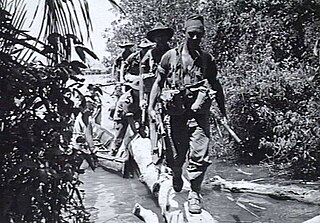 W
WThe Battle of North Borneo took place during the Second World War between Allied and Japanese forces. Part of the wider Borneo campaign of the Pacific War, it was fought between 10 June and 15 August 1945 in North Borneo. The battle involved a series of amphibious landings by Australian forces on various points on the mainland around Brunei Bay and upon islands situated around the bay. Japanese opposition to the landings was sporadic initially, although as the campaign progressed a number of considerable clashes occurred and both sides suffered significant casualties, although major combat was largely restricted to Labuan and around Beaufort. On the mainland, while Allied conventional operations focused largely on the coastal areas around Brunei Bay, guerrilla forces consisting of Dayak tribesmen and small numbers of Allied personnel from the Services Reconnaissance Department fought an unconventional campaign in the interior. The Allies were successful in seizing control of the region. Nevertheless, many of the strategic gains that possession of North Borneo provided were ultimately negated by the sudden conclusion of the war in August 1945.
 W
WThe Berhala Island is a small forested island situated in Sandakan Bay in Sandakan, Sabah, Malaysia.
 W
WThis is the complete order of battle of Allied and Japanese forces during the Borneo campaign of 1945. As the campaign was fought in three geographically separate areas and the same air and naval units supported more than one of these battles the order of battle is split into the three areas.
 W
WThe British North Borneo Herald (BNBH) was a periodical magazine in British North Borneo, published between 1883 until 1941 by the government of North Borneo under various official names.
 W
WWilliam Clark Cowie was a Scottish engineer, mariner, and businessman who helped establish British North Borneo and was Chairman of the British North Borneo Company.
 W
WThe Crown Colony of Labuan was a British Crown colony on the northwestern shore of the island of Borneo established in 1848 after the acquisition of the island of Labuan from the Sultanate of Brunei in 1846. Apart from the main island, Labuan consists of six smaller islands; Burung, Daat, Kuraman, Papan, Rusukan Kecil, and Rusukan Besar.
 W
WSir Alfred Dent, was a British colonial merchant and entrepreneur. He was a founder of the British North Borneo Company.
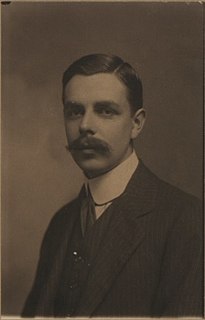 W
WIvor Hugh Norman Evans (1886–1957) was a British anthropologist, ethnographer and archaeologist who spent most of his working life in peninsular British Malaya and in North Borneo.
 W
WGreat Bakkungaan Island is a small tropical island surrounded by the Sulu Sea in the province of Tawi-Tawi, Philippines. The island is the one of the seven Philippine Turtle Islands.
 W
WDatuk Seri Panglima O.K.K Gunsanad Kina was a chief of the Dusun and Murut peoples. In association with Sampuun of Tambunan, he was one of the key figures involved in getting the British North Borneo Company to actively govern the interior region of the then North Borneo.
 W
WThe history of Sabah can be traced back to about 23–30,000 years ago when evidence suggests the earliest human settlement in the region existed. The history is interwoven with the history of Brunei and the history of Malaysia, which Sabah was previously part of and is currently part of respectively. The earliest recorded history of Sabah being part of any organised civilisation began in the early 15th century during the thriving era of the Sultanate of Brunei. Prior to this, early inhabitants of the land lived in predominantly tribal societies, although such tribal societies had continued to exist until the 1900s. The eastern part of Sabah was ceded to the Sultan of Sulu by the Sultan of Brunei in 1658 for the former helping a victory over Brunei enemies, but many sources stated it had not been ceded at all. By the late 19th century, both territories previously owned by Sultan of Brunei and Sultan of Sulu was granted to British syndicate and later emerged as British North Borneo under the management of the North Borneo Chartered Company. Sabah became a protectorate of the United Kingdom in 1888 and subsequently became a Crown colony from 1946 until 1963, during which time it was known as Crown Colony of North Borneo. On 16 September 1963, Sabah merged with Malaya, Sarawak and Singapore to form Malaysia.
 W
WAgnes Newton Keith was an American author best known for her three autobiographical accounts of life in North Borneo before, during, and after the Second World War. The second of these, Three Came Home, tells of her time in Japanese POW and civilian internee camps in North Borneo and Sarawak, and was made into a film of the same name in 1950. She published seven books in all.
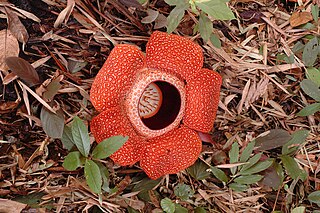 W
WHenry George Keith (1899-1982), known as Harry Keith, was a British forester and plant collector. Keith is credited with starting the process of large-scale conservation of the forests of North Borneo. In 1984 a new species of Rafflesia endemic to Sabah, Rafflesia keithii, was named in his honour. Keith was the husband of author Agnes Newton Keith.
 W
WThe Battle of Labuan was an engagement fought between Allied and Imperial Japanese forces on the island of Labuan off Borneo during June 1945. It formed part of the Australian invasion of North Borneo, and was initiated by the Allied forces as part of a plan to capture the Brunei Bay area and develop it into a base to support future offensives.
 W
WLittle Bakkungaan Island is a tiny, flat, tropical island surrounded by the Sulu Sea in the state of Sabah, Malaysia. The island is the largest of the three Malaysian Turtle Islands that together comprise the Turtle Islands National Park. It covers a land area of 8.5 hectares. It is at the very edge of the international treaty limits separating Malaysia from the Republic of the Philippines. Indeed, the island itself is referred to in the international border treaty concluded in 1930 between the United States and the United Kingdom. That treaty sets the international frontier as running in a straight line between Little Bakkungaan Island and Great Bakkungaan Island. Great Bakkungaan Island is one of the Philippine Turtle Islands and less than 2km of water separate the two islands. This makes Little Bakkungaan Island the internationally recognised Malaysian territory that is closest to Philippine territory. The island hosts a turtle hatchery. The island is administered by Sabah Parks. There are several buildings on the island used by park rangers as well as a peer. Much of the island is surrounded by beach.
 W
WSir Hugh Low, was a British colonial administrator and naturalist. After a long residence in various colonial roles in Labuan, he became the first successful British administrator in the Malay Peninsula where he made the first trials of Hevea rubber in the region. He is often considered the first successful British administrator in the Malay Peninsula, whose methods became models for subsequent British colonial operation in the entire South East Asia Region.
 W
WThe Mat Salleh Rebellion was a series of major armed disturbances against the colonial British North Borneo Chartered Company administration in North Borneo, now the Malaysian state of Sabah. It was instigated by Datu Muhammad Salleh, a local chief from the Lingkabo district and Sugut River. He led the rebellion between 1894 until his death in Tambunan in 1900. The resistance then continued on for another 5 years until 1905.
 W
WSir John Fearns Nicoll, was a British colonial governor. He was Colonial Secretary of Hong Kong from 1949 to 1952, and Governor of Singapore from 1952 to 1955.
 W
WNorth Borneo competed at the 1956 Summer Olympics in Melbourne, Australia. It was the only Olympic appearance by the former British protectorate, which formed part of the new country Malaysia in 1963.
 W
WThe North Borneo Chartered Company (NBCC), also known as the British North Borneo Company (BNBC) was a British chartered company formed on 1 November 1881 to administer and exploit the resources of North Borneo. The territory became a protectorate of the British Empire in 1888 but the company remained involved with the territory until 1946, when administration was fully assumed by the Crown colony government.
 W
WPostal orders of British North Borneo were issued as British postal orders at various times prior to 1963, when it was ceded to become one of the states of Malaysia under the name of Sabah. Postal orders of British North Borneo are considered as collectible items and listed under a separate issuer entity by the GB Overprints Society and the Postal Order Society.
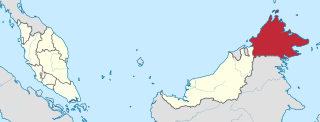 W
WSabah is a state of Malaysia located on the northern portion of Borneo. Sabah has land borders with the Malaysian state of Sarawak to the southwest and Indonesia's Kalimantan region to the south. The Federal Territory of Labuan is an island just off the Sabah coast. Sabah shares maritime borders with Vietnam to the west and the Philippines to the north and east. Kota Kinabalu is the state capital city, the economic centre of the state and the seat of the Sabah state government. Other major towns in Sabah include Sandakan and Tawau. As of the 2015 census in Malaysia, the state's population is 3,543,500. Sabah has an equatorial climate with tropical rainforests and abundant animal and plant species. The state has long mountain ranges on the west side which form part of the Crocker Range National Park. Kinabatangan River, second longest river in Malaysia runs through Sabah and Mount Kinabalu is the highest point of Sabah as well as of Malaysia.
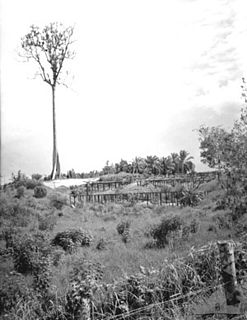 W
WThe Sandakan Death Marches were a series of forced marches in Borneo from Sandakan to Ranau which resulted in the deaths of 2,434 Allied prisoners of war held captive by the Empire of Japan during the Pacific campaign of World War II in the Sandakan POW Camp. By the end of the war, of all the prisoners who had been incarcerated at Sandakan and Ranau, only six Australians survived, all of whom had escaped. It is widely considered to be the single worst atrocity suffered by Australian servicemen during the Second World War.
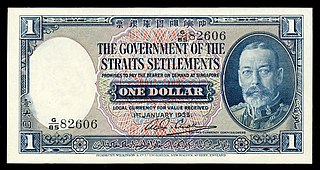 W
WThe Straits dollar was the currency of the Straits Settlements from 1898 until 1939. At the same time, it was also used in the Federated Malay States, the Unfederated Malay States, Kingdom of Sarawak, Brunei, and British North Borneo.
 W
WTaganak Island is a small tropical island surrounded by the Sulu Sea in the province of Tawi-Tawi, Philippines. The island is the largest of the seven Philippine Turtle Islands.
 W
WThe Treaty of Labuan was signed between Great Britain and the Sultan of Brunei on 18 December 1846. Under this treaty, the Sultan ceded the island of Labuan to Great Britain.
 W
WArthur Joseph West was a British civil engineer. Under his leadership, the Labuan Coal Line and the North Borneo Railway from Beaufort to Weston and Melalap were built.